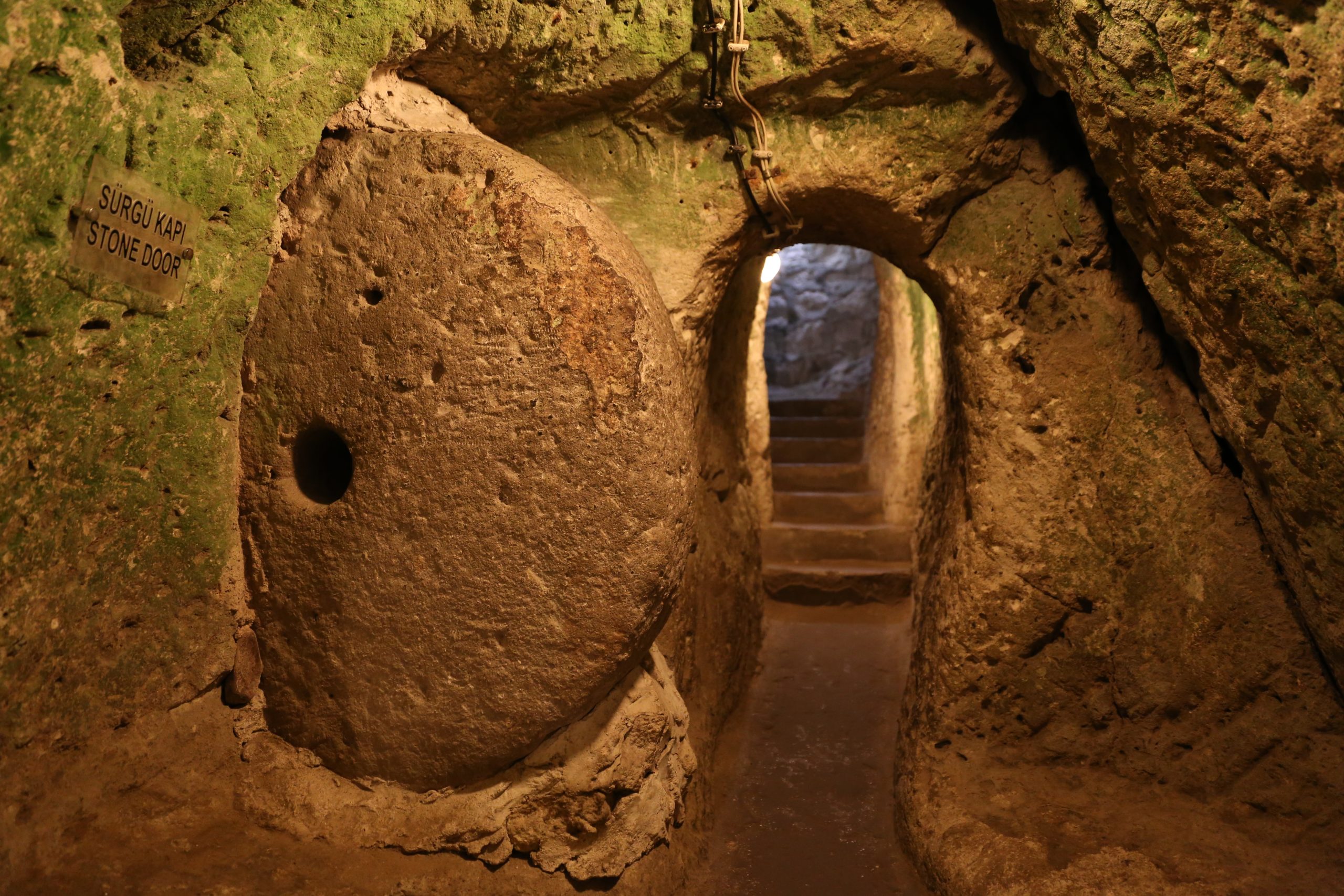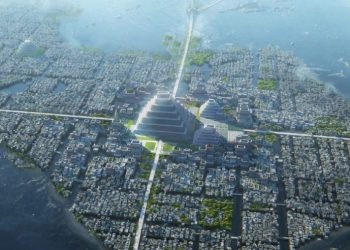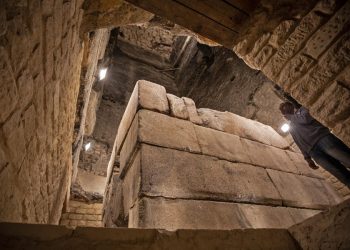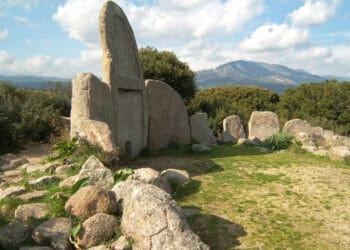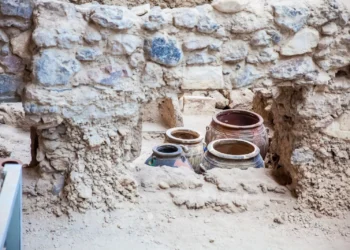Long before steel and concrete-shaped skylines, entire cities were carved deep below the Earth. These were not just emergency shelters — these were fully developed with food storage, schools, temples, and homes. Mind-boggling ancient cities. One could hold over 20,000 people. But despite decades of research, no one knows exactly why they were built. Were they designed to protect from war, climate disaster, or something more mysterious? These hidden cities remain one of archaeology’s most enduring riddles.
Derinkuyu: A vast city buried beneath Cappadocia
In central Turkey’s Cappadocia region, the ancient city of Derinkuyu plunges 18 stories below ground. Discovered by accident in 1963 when a homeowner knocked down a wall and found a hidden room behind it, Derinkuyu revealed an enormous underground complex — complete with kitchens, wine presses, churches, ventilation shafts, and even livestock pens.
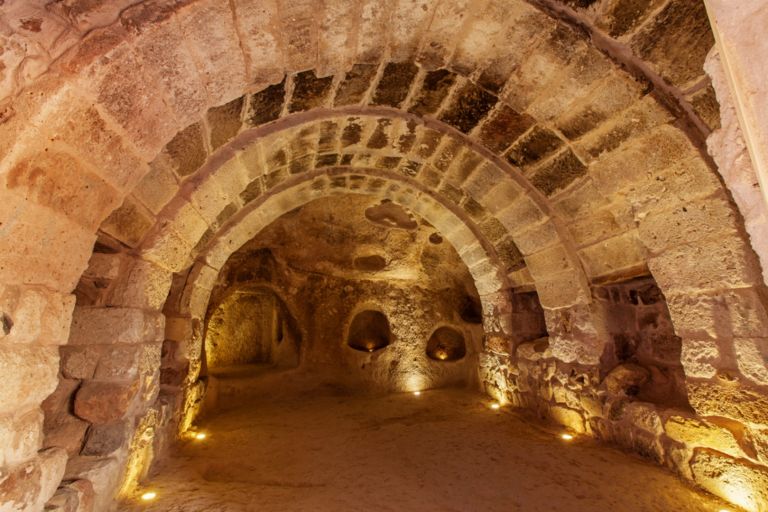
At its peak, Derinkuyu could accommodate more than 20,000 people. Stone doors could seal off sections of the city in case of invasion, and long vertical shafts provided fresh air to the deepest levels. The earliest sections may date back to around 800 BCE, with possible Hittite origins, though some scholars argue it could be even older. It was later expanded and used by early Christians fleeing persecution.
Kaymakli: A connected city beneath the stone

Not far from Derinkuyu lies Kaymakli, another underground settlement likely connected by tunnels to its larger neighbor. Unlike the vertical structure of Derinkuyu, Kaymakli spreads out horizontally, with a maze of rooms across at least five known levels — though many believe there are more yet to be discovered.
Kaymakli was designed for community living, with homes, kitchens, storage areas, and stables all organized into clusters. Its structure suggests it was built not just for hiding, but for long-term habitation. Most experts date its active use to the Byzantine era, especially during times of regional conflict, but some of the rock-cut foundations could be much older.
Mazı: A hidden vertical city carved into the rock
Mazı is a lesser-known but equally fascinating example of ancient underground cities in the Cappadocia region. Unlike the more spacious layouts of Derinkuyu or Kaymakli, Mazı is a vertical settlement, built deep into the volcanic stone with narrow passageways, hidden doors, and steep staircases.
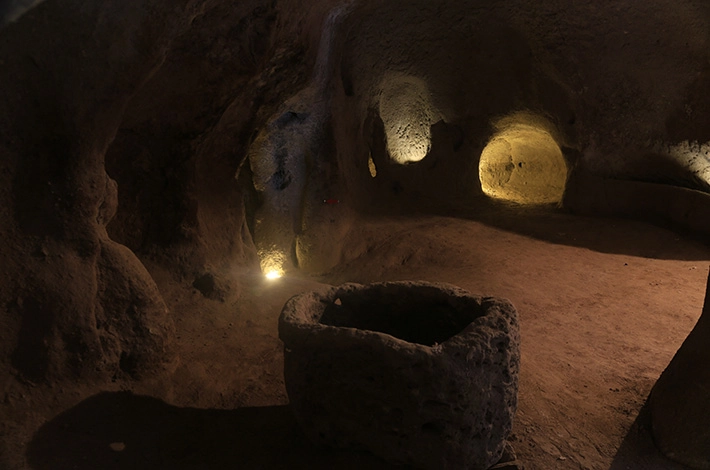
Its design suggests a focus on defense. Invaders could be slowed or trapped in tight corridors, while residents could escape or defend themselves using hidden exits and small observation holes. Archaeological evidence links Mazı to the Roman or early Christian period, but the full timeline of its use is still uncertain.
Özkonak: Engineered for siege survival
Located in northern Cappadocia, Özkonak may be smaller than Derinkuyu, but it features some of the most sophisticated defense features ever found in ancient cities. Built with narrow shafts that allowed residents to pour boiling oil or water on attackers, it also had communication pipes that ran between levels — a rare feature not seen in other sites.
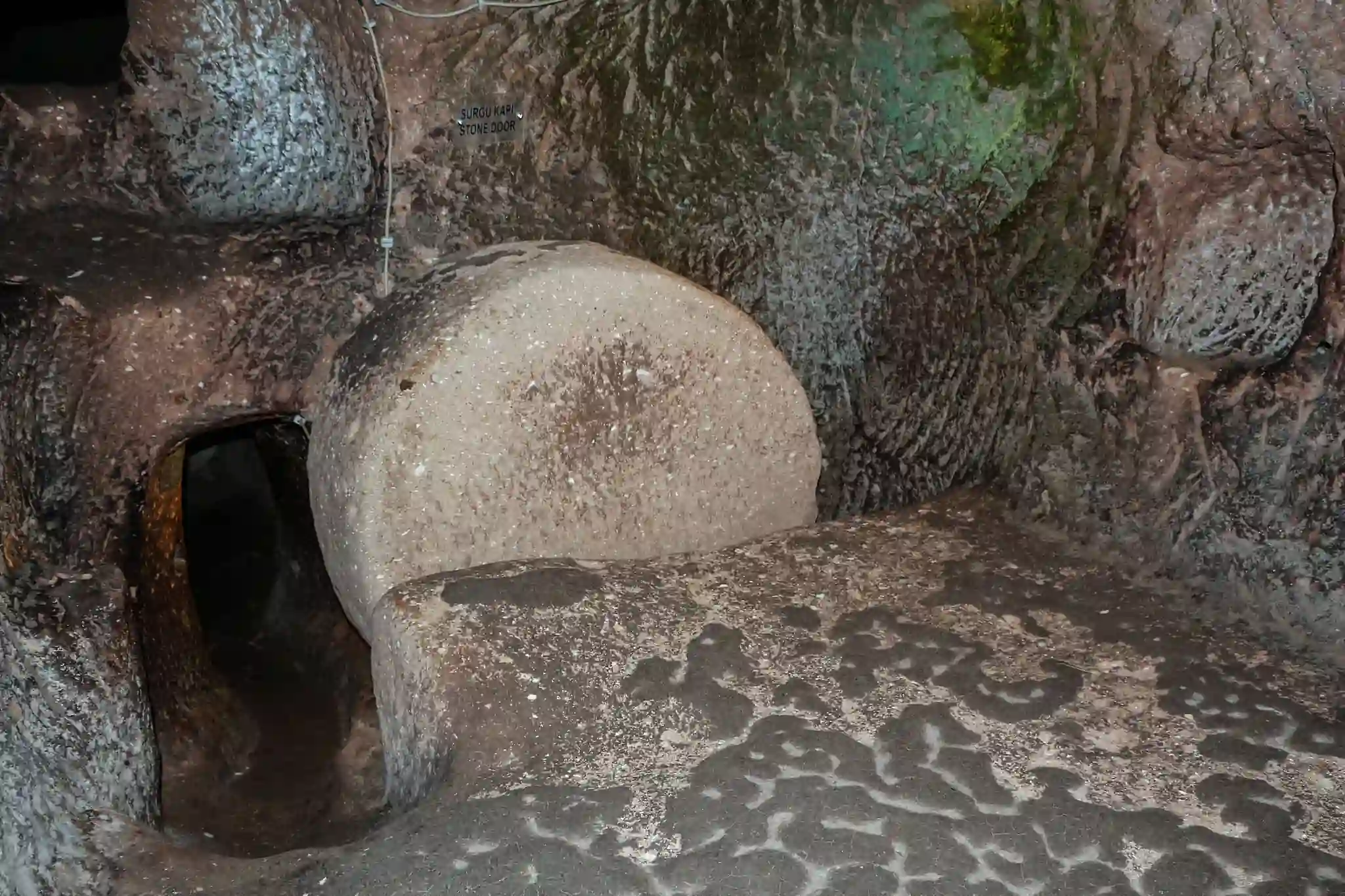
Only four levels of Özkonak have been excavated so far, but archaeologists believe there are deeper chambers waiting to be uncovered. Like many of Cappadocia’s subterranean settlements, the exact age of Özkonak is still debated, though its structure suggests it was built with long-term survival in mind.
Tatlarin: A mysterious city still under excavation
Tatlarin is one of the lesser-explored ancient cities in the region. Located near Nevşehir, it features a chapel, storage rooms, and stables — all carved into the rock. Unlike the larger underground complexes, Tatlarin remains only partially excavated, and much of it is still hidden beneath the surface.
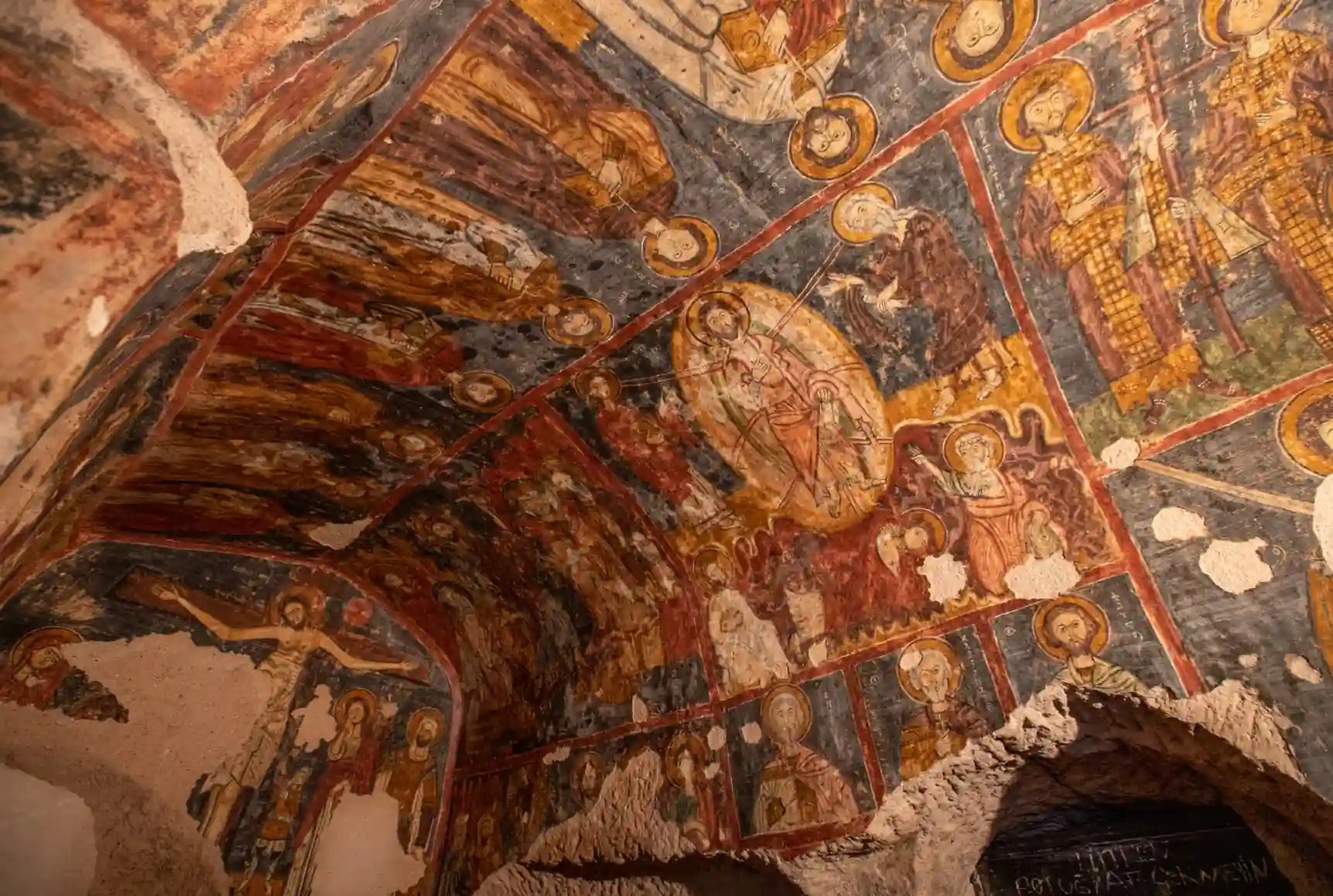
Its layout and architecture suggest it may have served both residential and religious purposes. The lack of large-scale tourism or full excavation gives Tatlarin a unique role in understanding the broader underground building tradition in ancient Anatolia.
Why were entire cities built underground?
I believe that the real mystery behind these ancient cities isn’t just their size, but the decision to build them underground at all. Excavating stone, carving tunnels, and creating entire living systems beneath the surface was no small task. It required time, planning, and purpose.
Some historians believe the cities were designed as defensive strongholds, built to protect people from invasions during unstable periods. With hidden entrances, stone doors, and narrow corridors that could be easily defended, the idea holds weight. Others argue that the underground environment offered relief from extreme weather or natural disasters, allowing communities to survive in harsh conditions.
There is also evidence of religious use. In many of these cities, archaeologists have found chapels, altars, and Christian symbols carved into the rock. This suggests they may have served as places of refuge during times of persecution, particularly in the early centuries of Christianity.
Still, these explanations only go so far. The scale of some cities, with facilities for wine production, animal shelters, and food storage, points to long-term habitation. They were not simple hideouts. They were meant to sustain life.
Perhaps the true answer is a combination of factors, or perhaps we are still missing the bigger picture. Until more evidence comes to light, the reasons why these ancient cities were built underground will remain one of the most compelling questions in archaeology.



